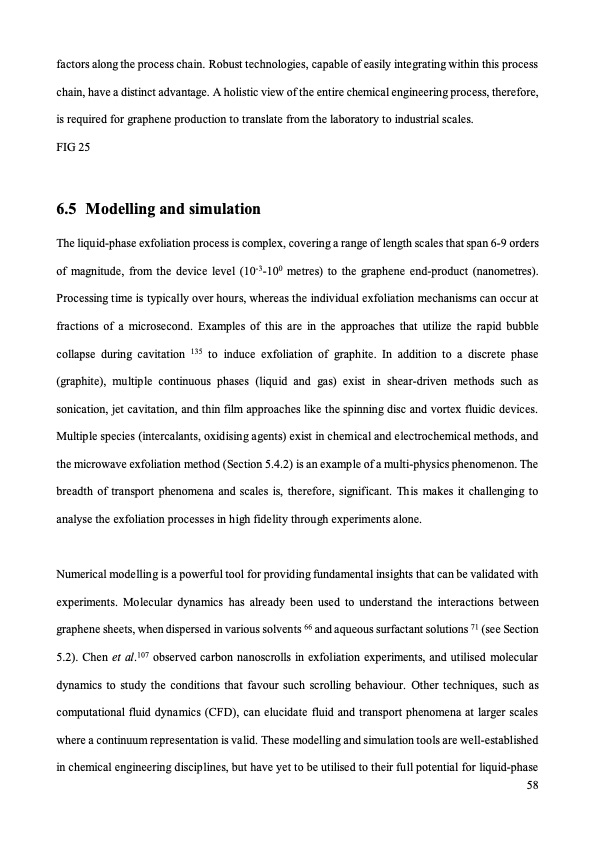PDF Publication Title:
Text from PDF Page: 058
factors along the process chain. Robust technologies, capable of easily integrating within this process chain, have a distinct advantage. A holistic view of the entire chemical engineering process, therefore, is required for graphene production to translate from the laboratory to industrial scales. FIG 25 6.5 Modelling and simulation The liquid-phase exfoliation process is complex, covering a range of length scales that span 6-9 orders of magnitude, from the device level (10-3-100 metres) to the graphene end-product (nanometres). Processing time is typically over hours, whereas the individual exfoliation mechanisms can occur at fractions of a microsecond. Examples of this are in the approaches that utilize the rapid bubble collapse during cavitation 135 to induce exfoliation of graphite. In addition to a discrete phase (graphite), multiple continuous phases (liquid and gas) exist in shear-driven methods such as sonication, jet cavitation, and thin film approaches like the spinning disc and vortex fluidic devices. Multiple species (intercalants, oxidising agents) exist in chemical and electrochemical methods, and the microwave exfoliation method (Section 5.4.2) is an example of a multi-physics phenomenon. The breadth of transport phenomena and scales is, therefore, significant. This makes it challenging to analyse the exfoliation processes in high fidelity through experiments alone. Numerical modelling is a powerful tool for providing fundamental insights that can be validated with experiments. Molecular dynamics has already been used to understand the interactions between graphene sheets, when dispersed in various solvents 66 and aqueous surfactant solutions 71 (see Section 5.2). Chen et al.107 observed carbon nanoscrolls in exfoliation experiments, and utilised molecular dynamics to study the conditions that favour such scrolling behaviour. Other techniques, such as computational fluid dynamics (CFD), can elucidate fluid and transport phenomena at larger scales where a continuum representation is valid. These modelling and simulation tools are well-established in chemical engineering disciplines, but have yet to be utilised to their full potential for liquid-phase 58PDF Image | graphene production via nonoxidizing liquid exfoliation

PDF Search Title:
graphene production via nonoxidizing liquid exfoliationOriginal File Name Searched:
Graphene-R2-review.pdfDIY PDF Search: Google It | Yahoo | Bing
Salgenx Redox Flow Battery Technology: Power up your energy storage game with Salgenx Salt Water Battery. With its advanced technology, the flow battery provides reliable, scalable, and sustainable energy storage for utility-scale projects. Upgrade to a Salgenx flow battery today and take control of your energy future.
CONTACT TEL: 608-238-6001 Email: greg@infinityturbine.com (Standard Web Page)